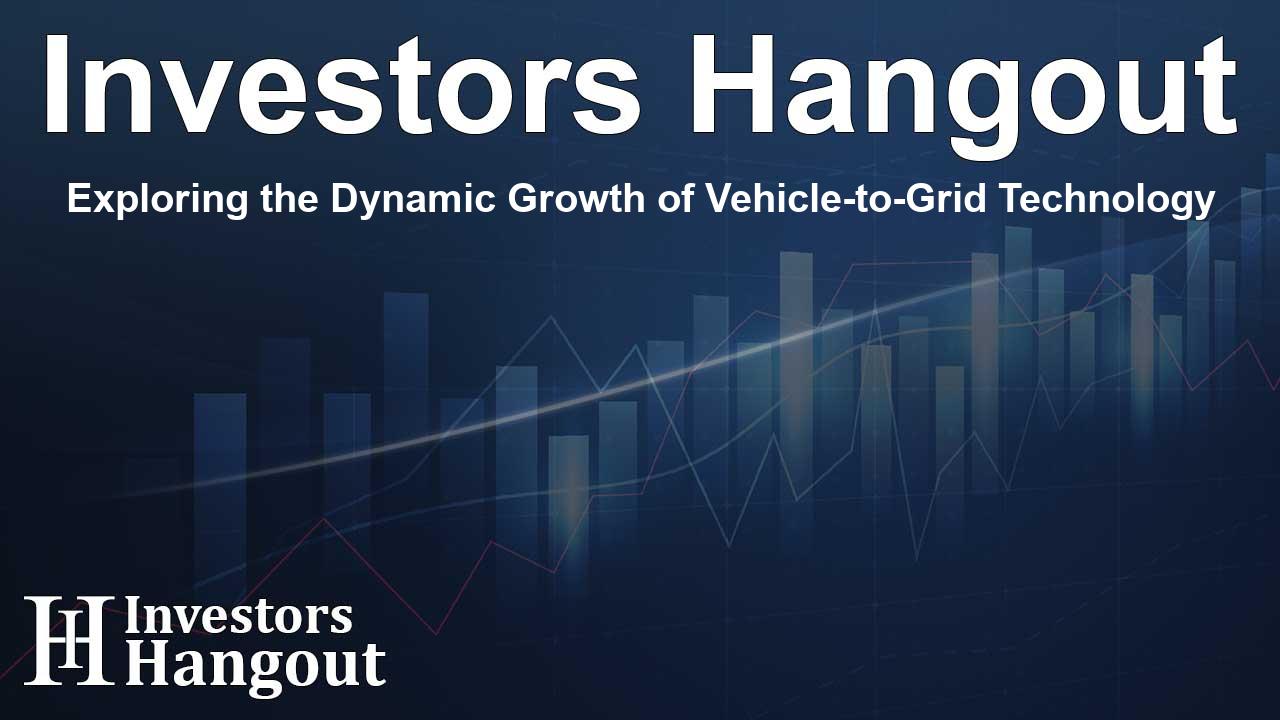Exploring the Dynamic Growth of Vehicle-to-Grid Technology

The Growing Vehicle-to-Grid Market: Overview
The vehicle-to-grid (V2G) technology is transforming the landscape of energy consumption and management. As we step into a future driven by electric vehicles (EVs), it’s estimated that the V2G market will experience a significant expansion, moving from USD 6.9 billion in 2025 to an impressive USD 78.8 billion by 2034. This anticipated growth can be attributed to various factors including heightened EV adoption and supportive government policies aimed at encouraging sustainable practices.
Key Drivers Fueling the Market Expansion
One of the most significant contributors to the rise of the V2G market is the soaring adoption of electric vehicles across the globe. As more consumers transition to electric vehicles, the interest in technologies that enhance their functionality, such as V2G, has surged. The V2G technology allows electric cars to not only draw energy from the grid but also return excess energy back, effectively turning cars into mobile power storage units.
Government Initiatives and Consumer Awareness
Governments worldwide are playing a crucial role by launching initiatives to promote electric vehicle use, which in turn supports the growth of the V2G market. By offering incentives and funding, they encourage consumers to invest in electric vehicles and related technologies. Additionally, people are becoming increasingly informed about the benefits of sustainable energy practices, driving demand for V2G solutions further.
The Role of Technology in V2G Development
The advancement of technology is another driving force behind the growth of the V2G market. With substantial improvements in infrastructure and electric vehicle supply equipment (EVSE), the integration of V2G technology has become more feasible. The availability of charging stations equipped with bidirectional capabilities facilitates the effective exchange of energy between electric vehicles and the grid, paving the way for a more resilient energy network.
Current Trends Enhancing the V2G Landscape
In addition to infrastructural advancements, the adoption of smart grid technology demonstrates how modern innovations are enhancing the effectiveness of V2G systems. These technologies support efficient energy distribution and storage, benefitting both consumers and energy providers by managing supply and demand in real time.
Challenges Facing the V2G Market
While the V2G market presents numerous opportunities, it is not without its challenges. Frequent charging and discharging of electric vehicle batteries raises concerns regarding potential battery degradation, which may deter some consumers from adopting V2G technology. Furthermore, public awareness regarding V2G benefits remains limited, preventing wider acceptance and adoption.
Economic Factors and Infrastructure Development
The economic viability of adopting V2G technology is affected by the costs associated with the necessary equipment and infrastructure. High costs for bidirectional chargers and energy converters can be a barrier for many consumers and businesses, hindering the overall growth of the market. Continuous efforts to improve technology and bring down costs are essential for overcoming these hurdles.
Future Prospects and Market Potential
The future of the vehicle-to-grid market is promising, with significant potential for growth as electric vehicles become more widespread and technology continues to evolve. Automakers and energy providers are increasingly investing in research and development to enhance V2G systems, ensuring that they remain an integral part of future energy solutions.
Industry Leaders Driving Change
Company innovators such as Nuvve Holding Corp, ABB Ltd, and Enel Spa are at the forefront of this exciting market, pushing boundaries in electric vehicle technologies and V2G initiatives. Their efforts contribute to a more sustainable future, emphasizing the importance of electric vehicles in modern energy solutions.
Frequently Asked Questions
What is the V2G technology?
Vehicle-to-grid (V2G) technology allows electric vehicles to return stored energy back to the electrical grid, facilitating a more resilient energy system.
How will the V2G market grow by 2034?
The V2G market is projected to grow from approximately USD 6.9 billion in 2025 to around USD 78.8 billion by 2034, primarily due to the rising adoption of electric vehicles.
What are the benefits of V2G?
V2G technology provides benefits such as enhanced grid stability, potential cost savings for consumers, and the integration of renewable energy sources.
What challenges does the V2G market face?
Main challenges include battery degradation due to frequent cycling, high costs of equipment, and limited public awareness regarding technology benefits.
Who are the major players in the V2G market?
Prominent companies leading the V2G market include Nuvve Holding Corp, E.ON U.K. plc, and ABB Ltd, each contributing to advancements in electric vehicle technologies and infrastructure.
About The Author
Contact Henry Turner privately here. Or send an email with ATTN: Henry Turner as the subject to contact@investorshangout.com.
About Investors Hangout
Investors Hangout is a leading online stock forum for financial discussion and learning, offering a wide range of free tools and resources. It draws in traders of all levels, who exchange market knowledge, investigate trading tactics, and keep an eye on industry developments in real time. Featuring financial articles, stock message boards, quotes, charts, company profiles, and live news updates. Through cooperative learning and a wealth of informational resources, it helps users from novices creating their first portfolios to experts honing their techniques. Join Investors Hangout today: https://investorshangout.com/
The content of this article is based on factual, publicly available information and does not represent legal, financial, or investment advice. Investors Hangout does not offer financial advice, and the author is not a licensed financial advisor. Consult a qualified advisor before making any financial or investment decisions based on this article. This article should not be considered advice to purchase, sell, or hold any securities or other investments. If any of the material provided here is inaccurate, please contact us for corrections.
